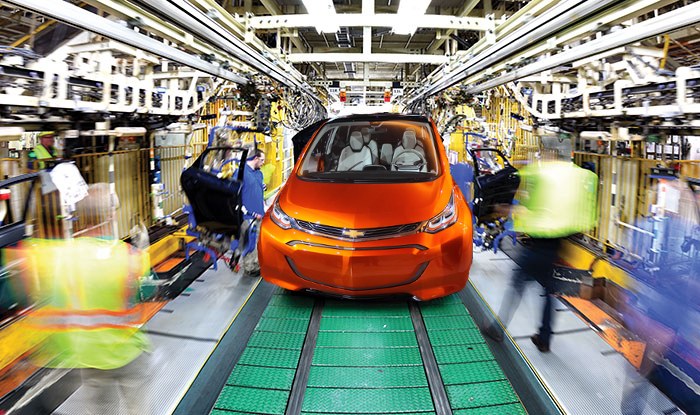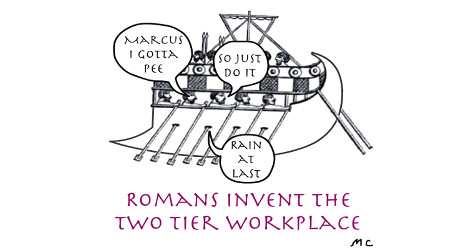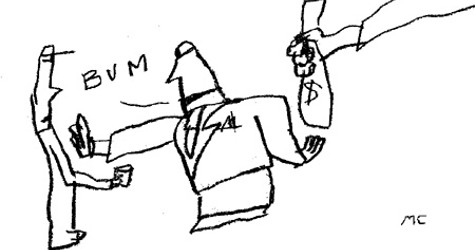Make GM Government Motors Again
Seven years ago, we owned General Motors (GM). With 49,000 autoworkers walking pickets to finally end the concessions, two-tier, and plant closings train of the last three decades, it’s mind-boggling to remember that the US Treasury owned GM for three years – and managed to do virtually nothing to benefit the working class with it.
We’re in a new period in which, thanks to the efforts of tens of thousands of socialists and Bernie Sanders’s presidential campaign, we are actively debating nationalizing the energy grid, a massive federal jobs guarantee, an even more massive retooling and public ownership of new green industries, and more. It feels like a political act in itself to remember the lost opportunities for leverage for struggles today.
 It’s also a political act to remember just how massive of a giveaway both in money and power the Obama administration and the centrists of the Democratic Party participated in while controlling all three branches of the government from 2009 to 2012.
It’s also a political act to remember just how massive of a giveaway both in money and power the Obama administration and the centrists of the Democratic Party participated in while controlling all three branches of the government from 2009 to 2012.
We have the chance over the next year to do a full-court press on several fronts – at the ballot box, in the streets, and now on the picket line – to organize around big ideas that can include not just nationalizing but socializing the auto industry again. The demand, if fulfilled, would save jobs, living wages, work conditions, and the planet at the same time.
The Nationalization That Wasn’t
Let’s back up a little. In March 2009, in exchange for $51-billion in bailout loans to the company, the US Treasury was given 500 million shares, 60.8 per cent of the total market capitalization, of GM. The public, on the books at least, owned a permanent controlling interest in the country’s largest auto-manufacturer.
Yet immediately after announcing the GM takeover, the Obama administration – building off the giveaway bailouts of Bush’s last year in office – sent loud clear signals that it had zero interest in doing anything long-run (or socially redeemable) with that ownership.
“What I have no interest in doing is running GM,” President Obama said at the time. The president’s only goal, he said, was to get GM running at a profit again and then “to get out quickly” and that “the federal government will refrain from exercising its rights as a shareholder in all but the most fundamental corporate decisions.”
While demanding a massive and painful restructuring of the company, the government made good on its promise to do very little on the managerial side. It declined to rein in the managerial excesses, hubris, and power that led to the crisis. A thin layer of management accountability was sprinkled on top: executive pay at the top levels was frozen, use of corporate jets were forbidden. Slightly tougher fuel-efficiency standards were mandated and the overreliance on light truck and sport utility vehicle (SUV) sales was slightly curbed.
Worse from the perspective of working people, the Obama administration also pushed for and helped squeeze more concessions out of the United Auto Workers (UAW).
Fourteen plants were closed. The concessionary conditions of the 2007 Big Three auto contracts (which dropped second-tier workers below living wages at $14.50) were not just maintained but deepened. The government joined corporate critics in calling successfully for the end of the Job Bank, a pay cushion to dissuade layoffs and keep workers from going broke.
A scant year later, the Obama administration was already done with its ownership role. In 2010 the Treasury gifted General Motors LLC (the corporate entity that emerged from GM’s bankruptcy to replace good old General Motors Inc) the public’s majority interest in the company: 358 million shares were sold back at $33/share, dropping public ownership from 61 per cent to 36.9 per cent.
In December 2012, the Treasury department sold another 200 million shares at $27.25/share back to General Motors. Over the next year, it sold off chunks of its stock, until by 2013 it held nothing at all. And amazingly it did it all at a loss, losing $10.8-billion in its rush to privatize at relatively undervalued prices.
The business press and the federal government knew at the time that it would take a loss from these sales. So why did it do it? In simpler terms, the Obama administration was so ideologically afraid of public ownership that it gave billions and ownership back to GM and its private shareholders at a steep loss. “The government should not be in the business of owning stakes in private companies for an indefinite period of time,” Timothy Massad of the Treasury Department said in explanation in 2012.
GM executives and Wall Street were thrilled that the right wing’s “Government Motors” smear could be lifted off the company’s back. The first restriction on the company lifted by the Treasury after it relinquished control was the ban on executives’ private jet use.
If the federal government had held that stock until today, it would be worth $18.7-billion, and we would still have public ownership of the largest auto-manufacturer in the country. But that didn’t happen.
Lean, Mean, Private GM
So, what did newly private GM do between then and now? For one thing, the severe restructuring and public giveaways of 2009–2012 restored its profitability for owners. From 2010–2016, it showed a net income of $50-billion, even reporting record profits in some quarters.
GM further extended its gains by paying almost nothing in federal income taxes in this period (a second layer of giveaways). According to GM’s corporate filings, by writing off its bankruptcy costs and other losses, the company has only paid income taxes in three of the past ten years. It additionally docked tax credits in several of those years. Last year GM filed its highest tax bill of the decade: a mere $18-million (while paying out $552-million in foreign taxes the same year, ironically enough for the corporate devotees of offshoring).
GM has even managed to add a turd to its recent turn to “green manufacturing,” the one move that has drawn some praise from progressive environmentalist circles. Engine and transmission lines have been some of the most labor-intensive parts of the auto assembly line. Industry analysts estimate that the less complex pieces of electric vehicles require 30 per cent fewer workers to assemble than fuel-consumption ones.
GM has explicitly tied its recent drive to close more United States and Canadian plants (a sticking point in the strike) to this “green” plan. According to a recent Wall Street Journal article: “The closed factories are the most visible sign of GM Chief Executive Mary Barra’s focus on redirecting capital to develop electric and driverless cars, capital-intensive bets with an uncertain payoff. GM plans 20 new electric models, mostly in China, over the next few years, funded in part by the plant closures and other moves aimed at boosting cash flow by $6-billion a year.”
Before the recent failed Big Three negotiations, the domestic auto companies seemed to be making moves to outsource most electric car parts to a constellation of nonunion parts suppliers (nearly all plug-in electric car batteries are already imported from Asian suppliers such as Panasonic and LG).
What Is to Be Done?
First and most urgently the current national strike against GM needs to be won. The revival of the mass strike by teachers across the country has strengthened the viability of winning large strikes. Despite its decades-long membership free-fall, the UAW has a whopping $750-million still in its (to date mostly unused) strike fund. Theoretically with strike benefits of $250/week per member, the union can stay out on strike for well over a year – while the company takes estimated losses of $50 to 100-million a week and had only a seventy-seven-day inventory of vehicles at the beginning of the strike.
The sclerotic and corruption-scandal-ridden UAW international leadership has a habit of snatching defeat out of the jaws of victory, but that’s still a hell of a lot of clout at the bargaining table. Solidarity efforts by other unions and strike support can and should be ramped up to build that pressure. Winning leads to broader political horizons.
Besides holding the line, now is the time to think again about the bold ideas. Michigan famously went to Bernie Sanders in an upset victory in 2016. The heartland of the auto industry has some political base for moving beyond the conventional range of answers.
A majority interest in GM today would be 728 million shares; meanwhile, its stock price has been falling as management refuses to settle with striking workers (standing at a total cost of $27.26-billion at the time of writing, a tiny drop in the bucket of the current $3.645-trillion budget).
Why not just stem the pain and buy back General Motors? Why not complete the nationalization (and dare we say socialization) of the company along deeper lines that benefit workers, consumers, and communities at large?
Government Motors Again?
What would a socialized General Motors look like?
Fueled by the new resurgent labor, political, and social movements in this country, the new GM could re-conceive a whole new arrangement of the firm. It could go beyond the previous pattern of management in full charge, government as silent partner, and the UAW upper leadership as a complicit “junior partner.” It could also surpass the traditional tripartite or state official – heavy boards of European social democracy, starting a long transition to more and more democratic, transparent, and directly accountable forms. (Indeed, any likely transformation would probably also need to entail a massive democratic, rank-and-file internal shakeup of the UAW leadership’s longstanding, corrupt Administration Caucus.)
The board could include directly voted on worker and community representatives. It could move beyond the phony participation schemes of team concept and lean production, and give workers increasing control of their own work conditions and production arrangements on the line.
In the short run, a new public GM could make good on many of the bold ideas for transformation coming out of this election cycle.
Want to hire more workers to reduce the layoff pressure? The company workweek could be cut to thirty-two hours allowing the firm to expand employment by 20 per cent. (This measure alone would greatly offset the 30 per cent loss of jobs from going electric.) This isn’t a fringe new idea either, according to retired autoworker and author Dianne Feeley: “Before the ’79 economic crisis, the UAW talked about reducing the work week, as Germany was doing so already. But for us this took the form of having the right to take our birthday off and maybe a couple of new holidays rather than going to a real thirty-five-hour work week, but at least the objective existed. That got dropped and never heard of again!”
Need a pillar for Bernie’s federal job guarantee policy? How about a large manufacturer paying well over $15/hour as the employer of last resort. Want to cap gross executive pay? The new board could freeze management pay at a maximum ratio of nine times the lowest worker salary as the Mondragon industrial cooperatives do in Spain.
Public GM could also lean into the Green New Deal’s goal to transform manufacturing. While GM’s current management sees new production as only centered around small vehicles, it is missing entire burgeoning markets around electric buses, heavy trucks, and trains. China is leading the world in replacing fuel-burning buses with electric buses buying 80,000 such buses alone last year (99 per cent of the world’s relatively untapped consumption). We could not only stop plant closings, but actually reopen plants as demand and production grows.
Winning a socialized makeover of GM is a daunting long shot. But we have a concrete example of just such an ambitious fightback and transformation strategy going on in Ontario. There, Canadian union and community activists are struggling not just to keep the large assembly plant in Oshawa open, but to have the community step in and transform the plant toward electric vehicle manufacturing and research.
In an era when we in the labor movement are finding ourselves backed further and further into the corner, why not be bold? •
This article first published on the Jacobin website.





